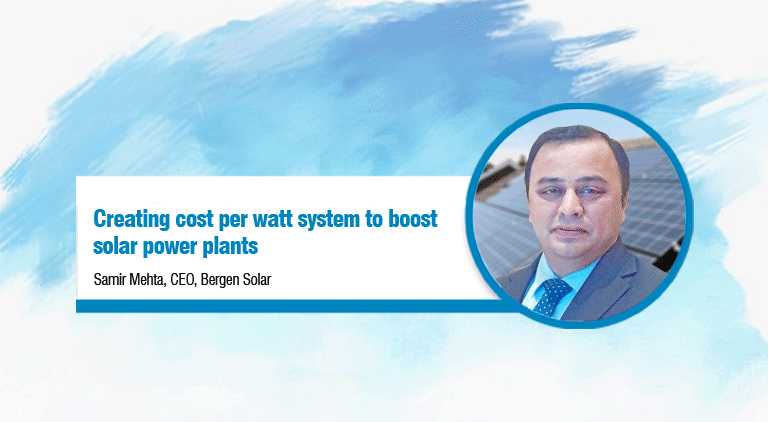Creating cost per watt system to boost solar power plants
By EPR Magazine Editorial October 16, 2019 4:03 pm IST
By EPR Magazine Editorial October 16, 2019 4:03 pm IST

“Cost per watt situation would be a huge strength to the power plant developer, as it needs minimum space and minimum BOS cost”
Samir Mehta, CEO, Bergen Solar
Samir Mehta, CEO, Bergen Solar in an conversation with Megha Iyer, talks about various aspects of solar industry whilst seeking clear and stringent policies for solar manufacturing.
How was your experience at REI expo 2019?
The event has been good for us. In this three-day event, we have witnessed an overwhelming response from the very first day itself. Overall I would say, it was much better than we expected and we hope that this continues from now.
How do you perceive REI as one of the top notch global events?
I think REI is an excellent platform for us as it caters almost everything that can be served for the solar and wind industry, which would further allow the industry to prosper. With India being a major market in the solar industry, I don’t find any other such huge platform that widens hope and opportunities for solar and wind industry. This is why most of the top, medium and small players from India participate in this exhibition as this strengthens their grasp in the industry. I would say that this is the second largest solar show in the world as it is an alternative for companies to showcase their innovations and highlight their achievements of this industry.
How different is mono-PERC solar cell from the traditional panel lines?
Basically, the entire industry is moving forward on the pattern of cost per watt. Ultimately, it’s the cost that matters, nobody talks about the technology, the innovations like several other things are standardised because of which people assume that these features are included in the designated cost. So, price per watt matters a lot. Mono-PERC gives an opportunity to the industry to reduce the power generation cost in rupees per watt. For example, a 72-cell standard multi/poly cell panel would be around 330 watts, but with mono-PERC there are chances to cross 370 or cross 400 watts. Bringing this situation into cost-per watt situation would be a huge strength to the power plant developer, as it needs minimum space and minimum BOS cost. I think these are the obvious benefits that go along with the technology apart from reduction in power loss per year compared to multi/poly cell panels.
There is a trend of providing customised solar products, what’s your say on it. What are the cost differences?
Customised product is good in a way; some projects follow a standard application where cost competition exists. In such cases, people won’t prefer to have customisation as comparison becomes difficult for them and the cost also varies on a larger scale for them. I would say customisation helps in special projects particularly in the rooftop segment as it generates more energy, subjected to usage. Some customers understand the concept and value them a lot; that’s why they are ready to bear the additional cost if they find it critically important. They do a cost-benefit analysis and if they find it reasonable, they prefer to have a customised panel particular for product special application.
We use cookies to personalize your experience. By continuing to visit this website you agree to our Terms & Conditions, Privacy Policy and Cookie Policy.